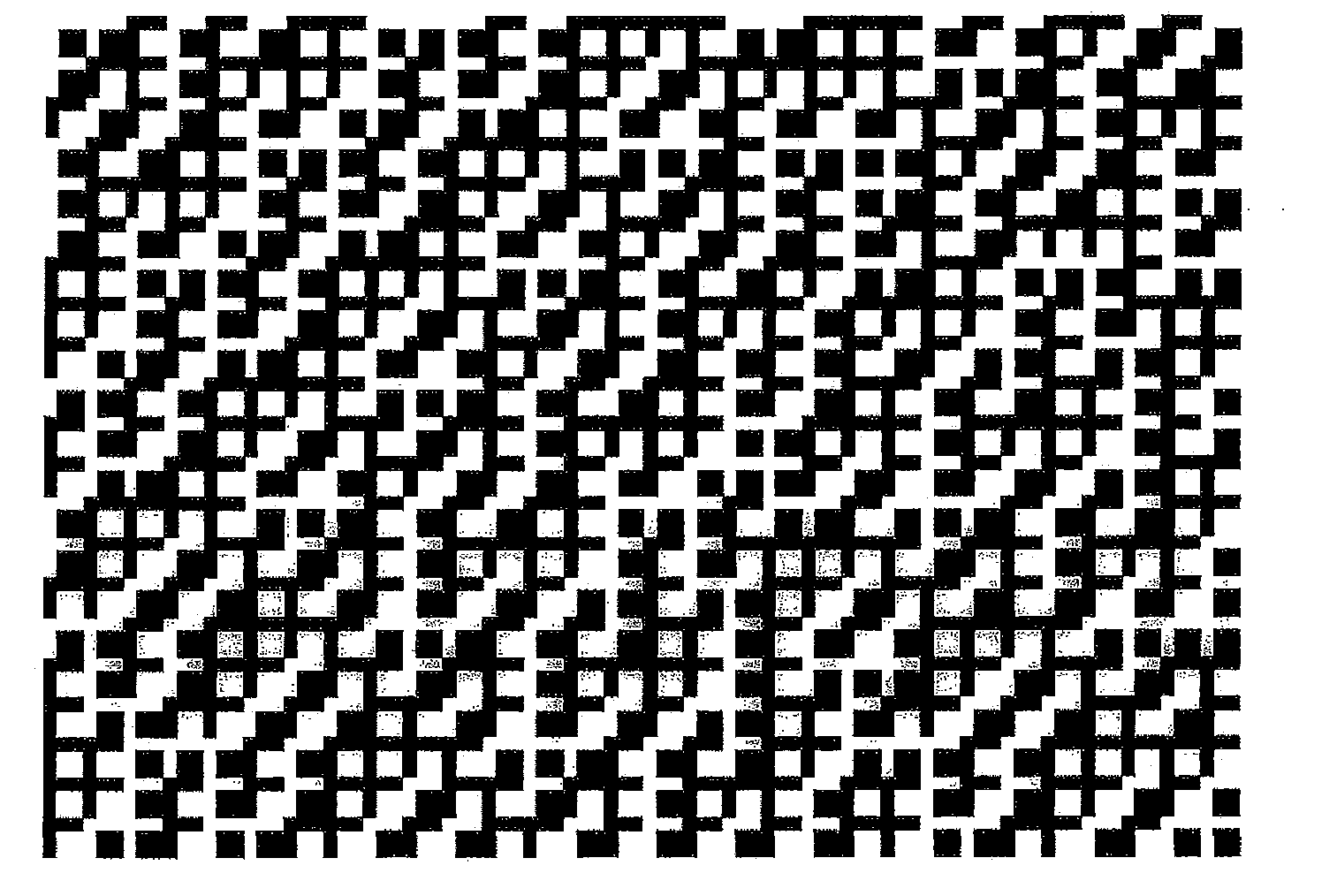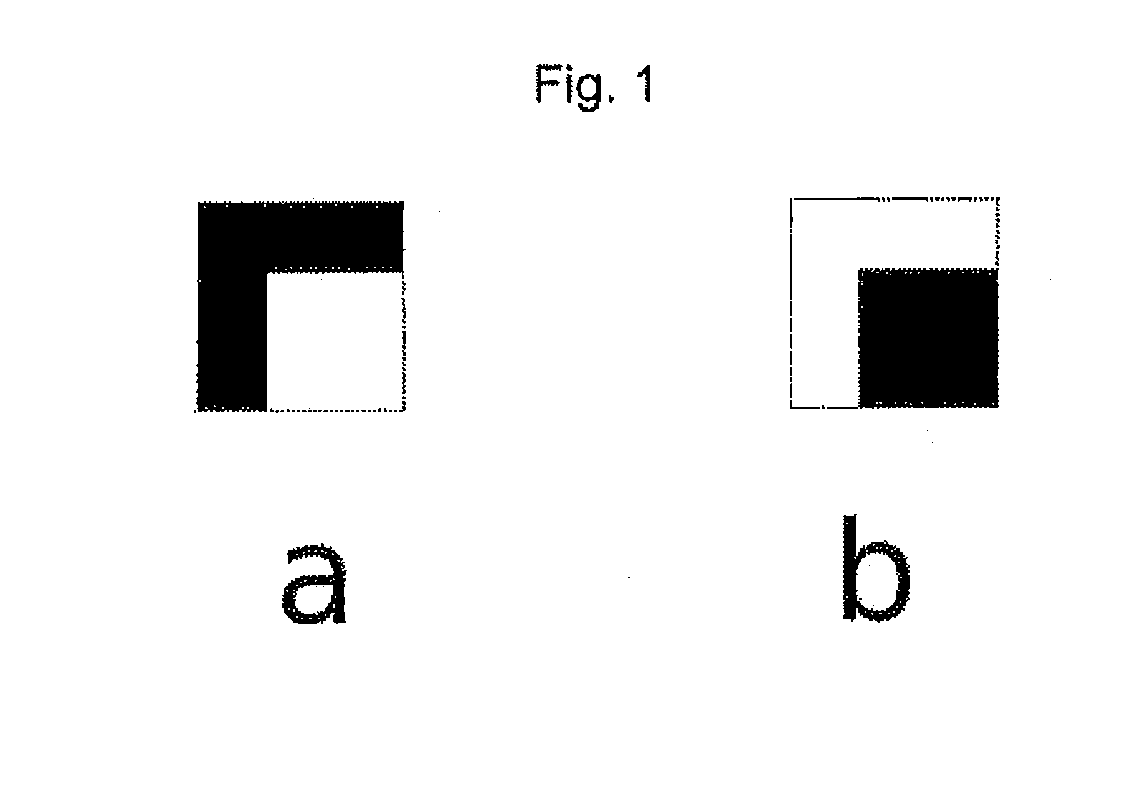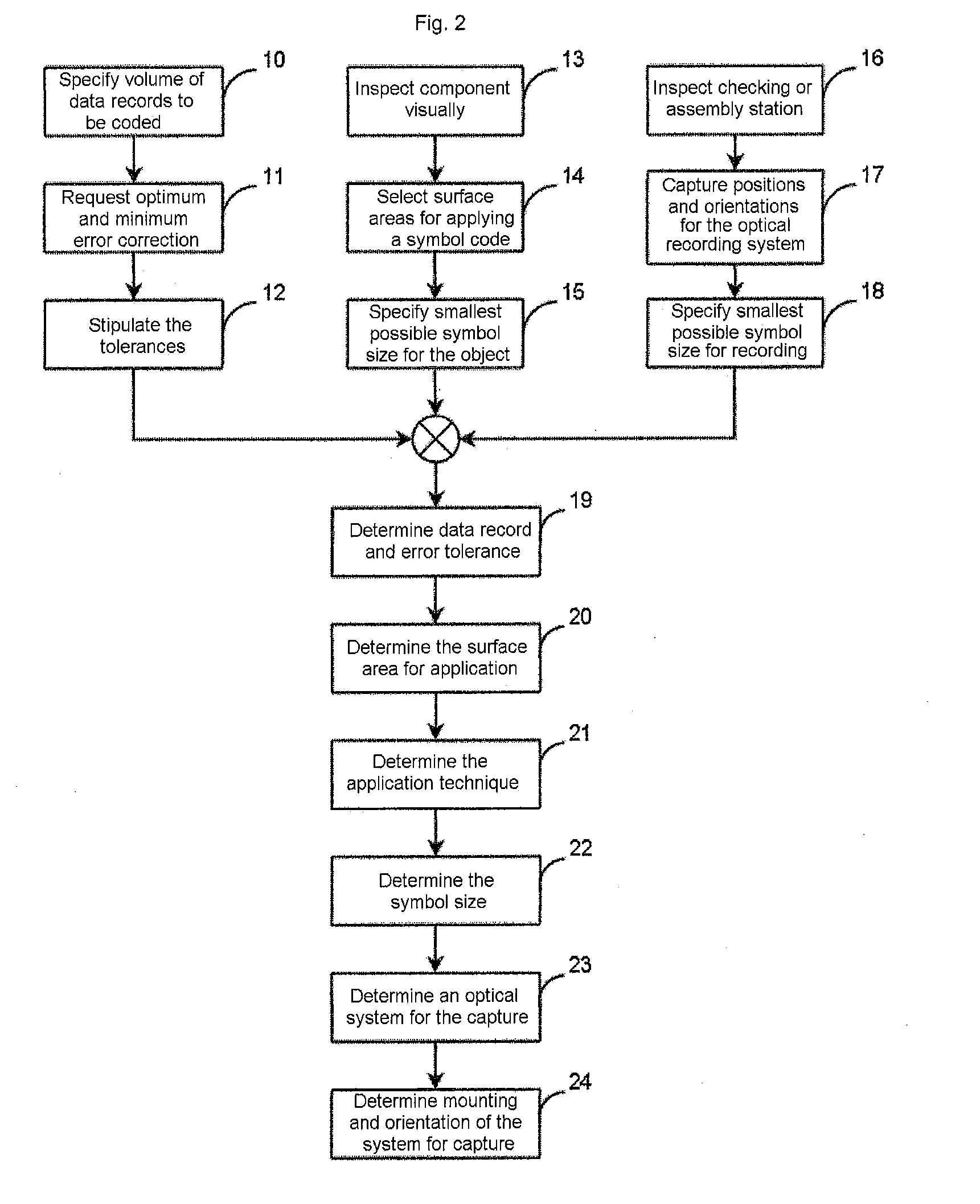Two-dimensional symbol code and method for reading the symbol code
a symbol code and two-dimensional technology, applied in the field of two-dimensional symbols, can solve the problems of insufficient robustness, inability to recover read errors, and inability to be corrected, and achieve the effects of short clock time in production, easy operation, and high degree of involvemen
- Summary
- Abstract
- Description
- Claims
- Application Information
AI Technical Summary
Benefits of technology
Problems solved by technology
Method used
Image
Examples
Embodiment Construction
[0149]FIG. 1 shows the graphical symbols or symbol types for binary zero- and one-words. From these two symbols, any arbitrarily shapable symbol code is produced. FIGS. 2 to 4 and FIG. 7 show the process of decision-making for a symbol code and the incorporation into the production process as flowcharts. FIGS. 5 and 6 show specific examples of the application of a symbol code to a particular component, with the variability and versatility becoming clear in the application of the specified symbol code.
[0150]Differently shaped symbol codes, as shown by way of example in FIGS. 8 to 11 and 13, can be integrated into a production process without any problem, FIG. 15 and the flowchart from FIG. 7 describing the production and association of surface area histograms with the various symbol codes. An algorithm for decoding the binary words represented by symbols can only deal with symbol codes of a particular shape in each case, so that the surface area histogram of the recognized symbol cod...
PUM
 Login to View More
Login to View More Abstract
Description
Claims
Application Information
 Login to View More
Login to View More - R&D
- Intellectual Property
- Life Sciences
- Materials
- Tech Scout
- Unparalleled Data Quality
- Higher Quality Content
- 60% Fewer Hallucinations
Browse by: Latest US Patents, China's latest patents, Technical Efficacy Thesaurus, Application Domain, Technology Topic, Popular Technical Reports.
© 2025 PatSnap. All rights reserved.Legal|Privacy policy|Modern Slavery Act Transparency Statement|Sitemap|About US| Contact US: help@patsnap.com



